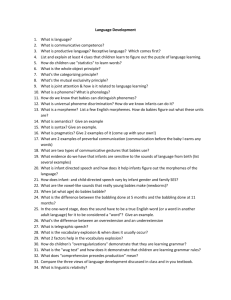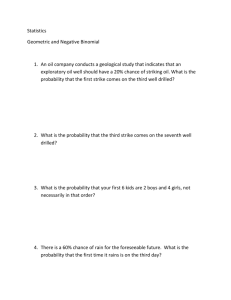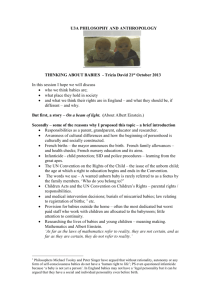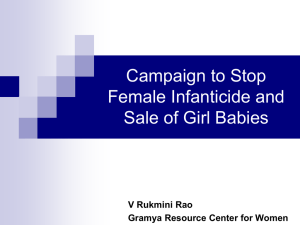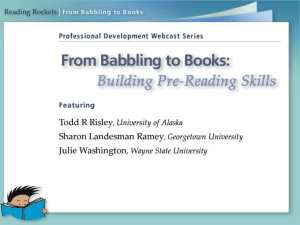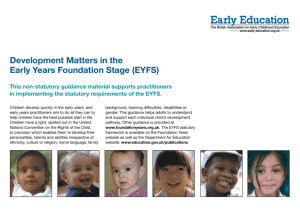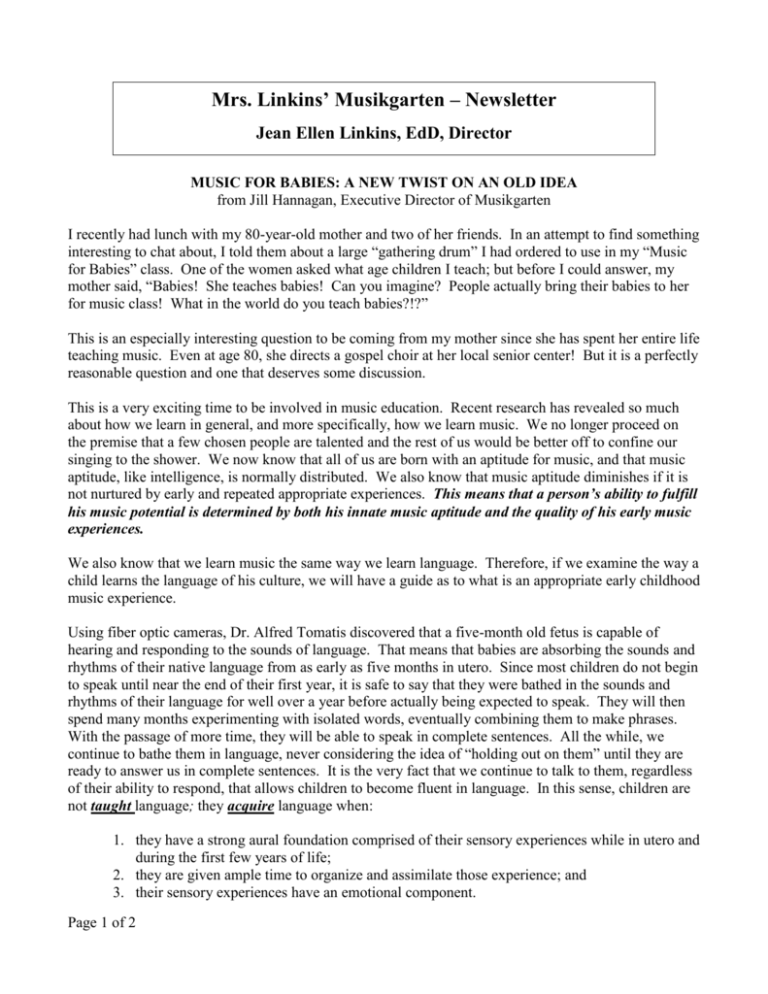
Mrs. Linkins’ Musikgarten – Newsletter
Jean Ellen Linkins, EdD, Director
MUSIC FOR BABIES: A NEW TWIST ON AN OLD IDEA
from Jill Hannagan, Executive Director of Musikgarten
I recently had lunch with my 80-year-old mother and two of her friends. In an attempt to find something
interesting to chat about, I told them about a large “gathering drum” I had ordered to use in my “Music
for Babies” class. One of the women asked what age children I teach; but before I could answer, my
mother said, “Babies! She teaches babies! Can you imagine? People actually bring their babies to her
for music class! What in the world do you teach babies?!?”
This is an especially interesting question to be coming from my mother since she has spent her entire life
teaching music. Even at age 80, she directs a gospel choir at her local senior center! But it is a perfectly
reasonable question and one that deserves some discussion.
This is a very exciting time to be involved in music education. Recent research has revealed so much
about how we learn in general, and more specifically, how we learn music. We no longer proceed on
the premise that a few chosen people are talented and the rest of us would be better off to confine our
singing to the shower. We now know that all of us are born with an aptitude for music, and that music
aptitude, like intelligence, is normally distributed. We also know that music aptitude diminishes if it is
not nurtured by early and repeated appropriate experiences. This means that a person’s ability to fulfill
his music potential is determined by both his innate music aptitude and the quality of his early music
experiences.
We also know that we learn music the same way we learn language. Therefore, if we examine the way a
child learns the language of his culture, we will have a guide as to what is an appropriate early childhood
music experience.
Using fiber optic cameras, Dr. Alfred Tomatis discovered that a five-month old fetus is capable of
hearing and responding to the sounds of language. That means that babies are absorbing the sounds and
rhythms of their native language from as early as five months in utero. Since most children do not begin
to speak until near the end of their first year, it is safe to say that they were bathed in the sounds and
rhythms of their language for well over a year before actually being expected to speak. They will then
spend many months experimenting with isolated words, eventually combining them to make phrases.
With the passage of more time, they will be able to speak in complete sentences. All the while, we
continue to bathe them in language, never considering the idea of “holding out on them” until they are
ready to answer us in complete sentences. It is the very fact that we continue to talk to them, regardless
of their ability to respond, that allows children to become fluent in language. In this sense, children are
not taught language; they acquire language when:
1. they have a strong aural foundation comprised of their sensory experiences while in utero and
during the first few years of life;
2. they are given ample time to organize and assimilate those experience; and
3. their sensory experiences have an emotional component.
Page 1 of 2
In a 1997 special edition of Newsweek devoted to brain development, Janellen Hullocher of the
University of Chicago suggested that “information embedded in an emotional context seems to stimulate
more neural circuitry more powerfully than information alone.” This idea is substantiated by
neuropsychologist and educator Carla Hannaford, PhD who stated in her book, Smart Moves: Why
Learning is Not All in Your Head: “In order to learn something, there must be sensory input, a personal
emotional connection, and movement…Emotions interpret each experience and help us to organize it in
terms of our view of the world.”
From this information, we can conclude that live music making provides the child with a much richer
sensory and emotional experience than recorded music could ever hope to. In fact, it’s hard to imagine a
more sensorially and emotionally charged experience than that of a mother singing to and dancing with
her child. The baby is not only hearing her voice, he is feeling the vibration of her voice as his head
rests on her chest, and he smells the familiar scent of her body, while all the while his vestibular system
is being stimulated by the rocking, bouncing, and spinning of their dance. This is a far cry from a baby
lying in his crib listening to a cassette.
So, in answer to my mother’s question, “What in the world do you teach babies,” I would have to say
this: The goal of all my parent/child music classes is not to teach anything! Rather—
it is to guide parents and children as they engage in musical activities that will help the child
fulfill his music potential;
it is to bathe them in the sounds and rhythms of the music of our culture;
it is to provide an environment which encourages musical interaction between parents and
children and gives parents the chance to get ideas from other parents as they make music with
their children;
it is to guide parents as to what movements are most beneficial for development;
it is to pass on the songs and rhymes that are part of our cultural heritage;
and it is to add to the collection of emotional, sensory experiences that will make up the aural
foundation on which all future music making will be based.
Having said all that, my primary goal for both the parents and children in my classes is that they
experience the joy of making music with others. The feeling created by engaging in active music
making with other people is quite special and becomes even more special when experienced by parents
and children together. Who knows…perhaps I can talk my mother into joining our class this year!
Copyright 2001 by Jill Hannagan. All rights reserved. For permission to copy contact the author at hannagan@udel.edu, or at 302-239-8281.
Page 2 of 2




